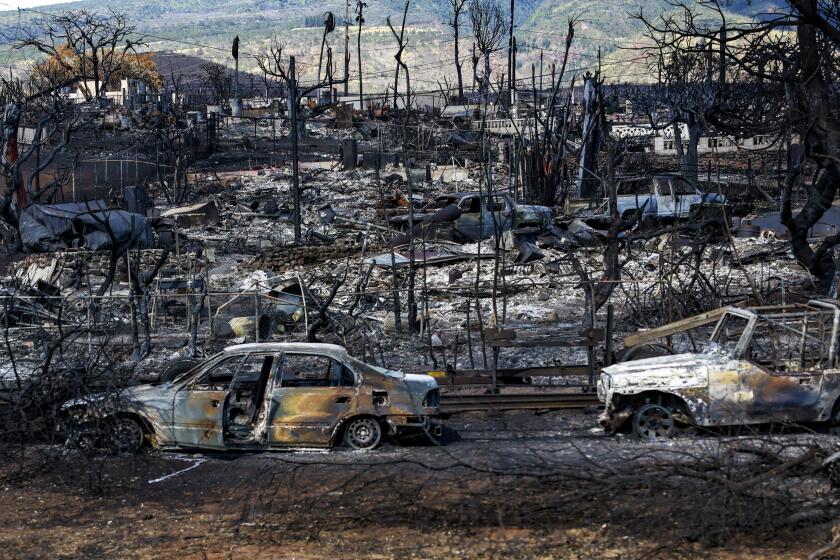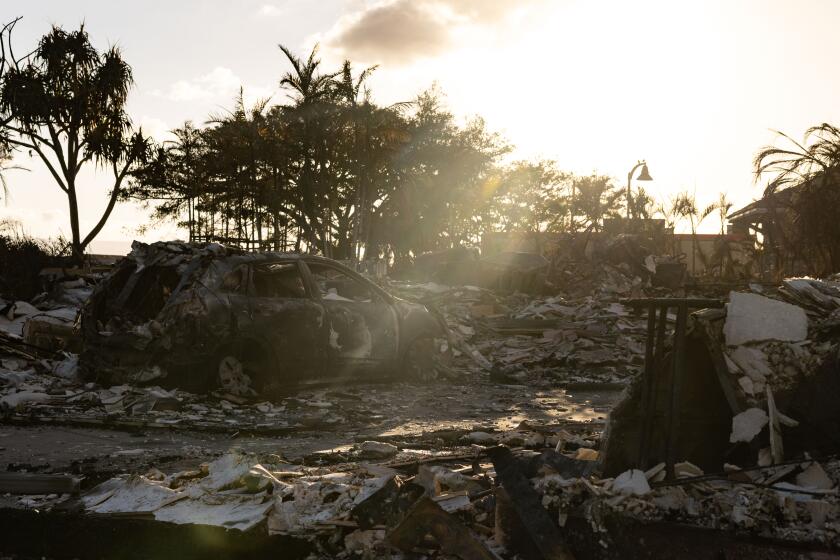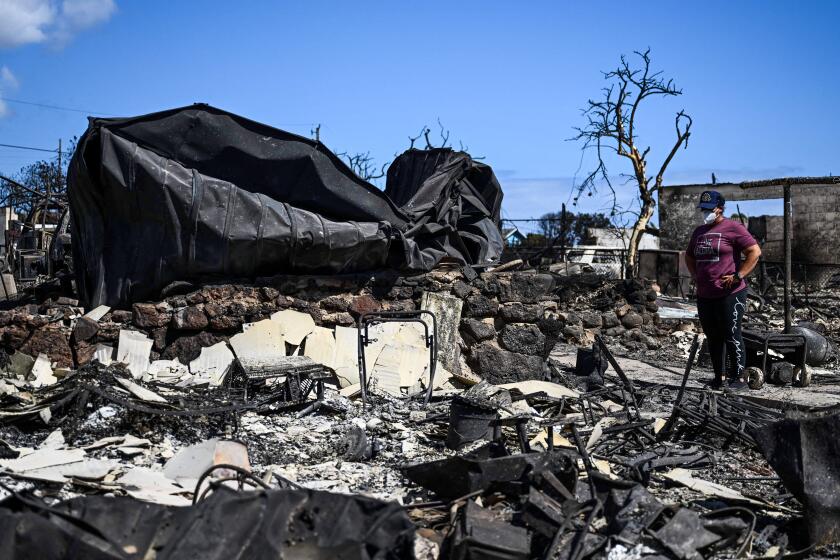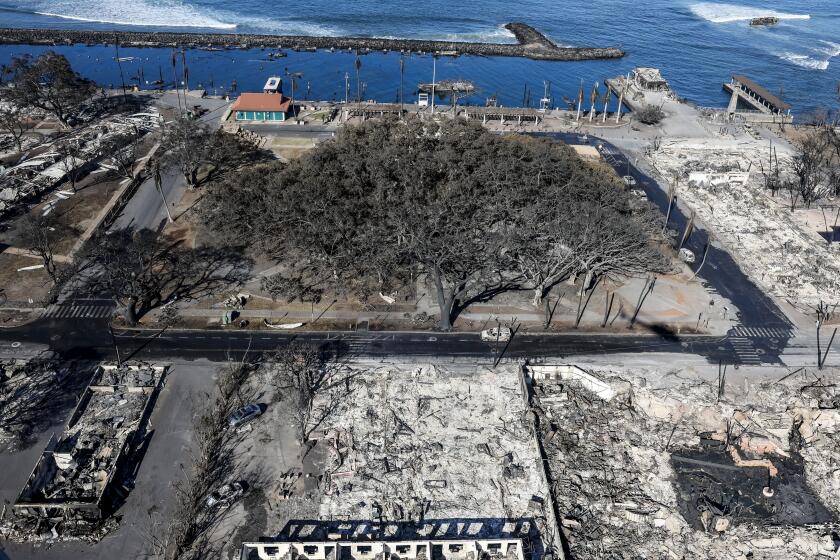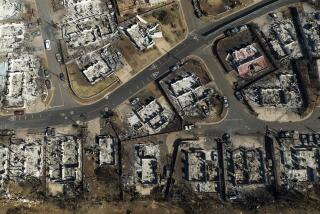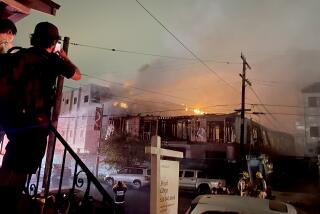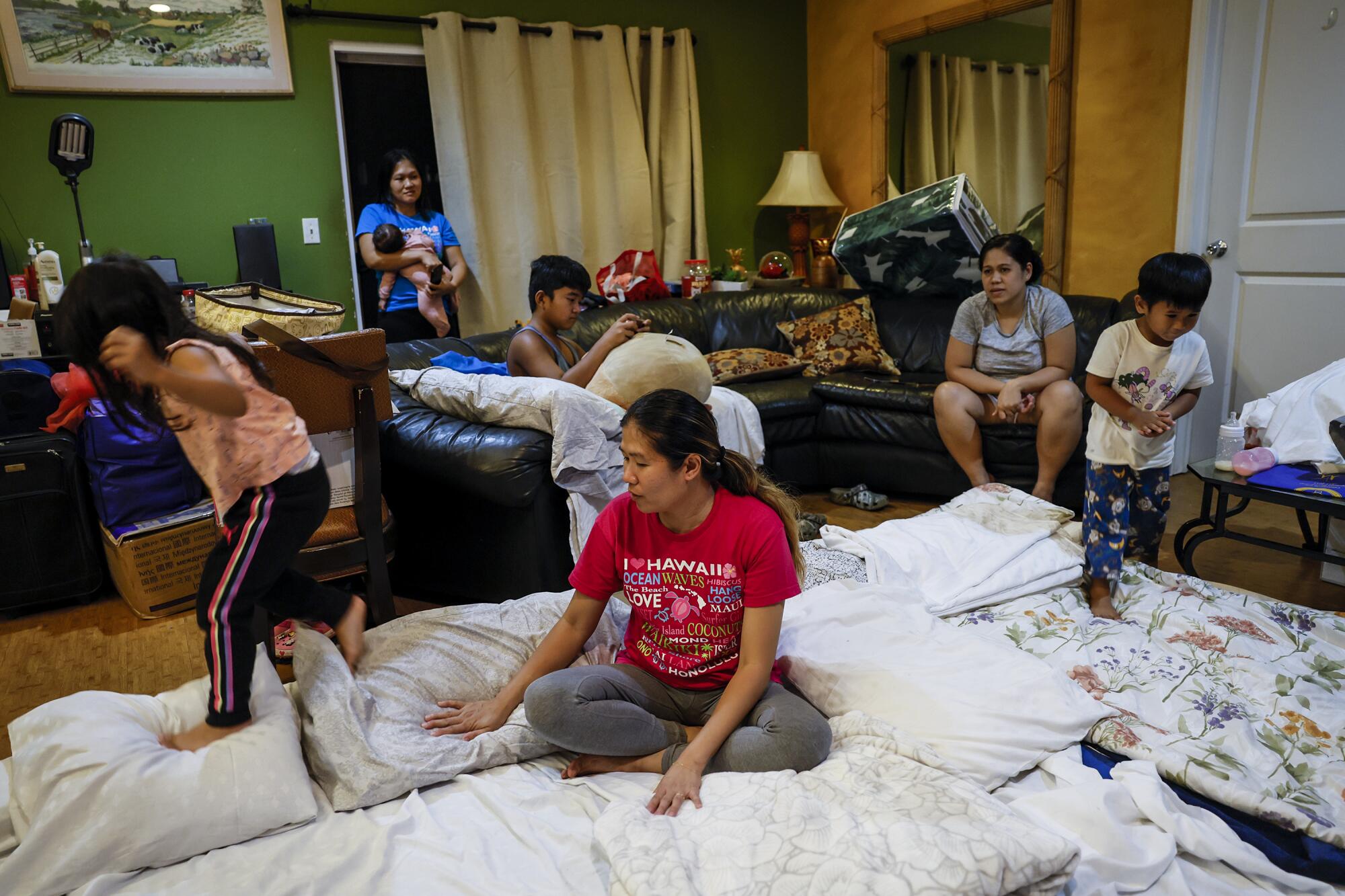
WAIKAPU GARDENS, Hawaii — The 4-year-old girl sat in the center of the living room chaos, jamming two empty crayon boxes together.
“It’s going to be a house,” whispered Keona Valiente, who was perched precariously between a chair and the circular glass dinner table.
The table was crammed with tins of baby formula, a half-eaten bag of King’s Hawaiian sweet rolls, vitamins, plastic water bottles marked with initials in black pen — the clutter of 16 people under a single roof.
They had all been living in the three-bedroom house in central Maui since the deadliest U.S. wildfire in a century laid waste to their beloved town of Lahaina.
A shirtless uncle washed dishes at the sink. Another uncle rocked a sleeping infant in one arm while scrolling his cellphone. Outside, the wind whipped through a rack of donated clothes left out to dry under the darkening sky.
Keona babbled wistfully to nobody in particular about Lahaina and things broken in the fire.
“The fire? What’d you say?” her aunt, Relyn Delfin, asked from across the table.
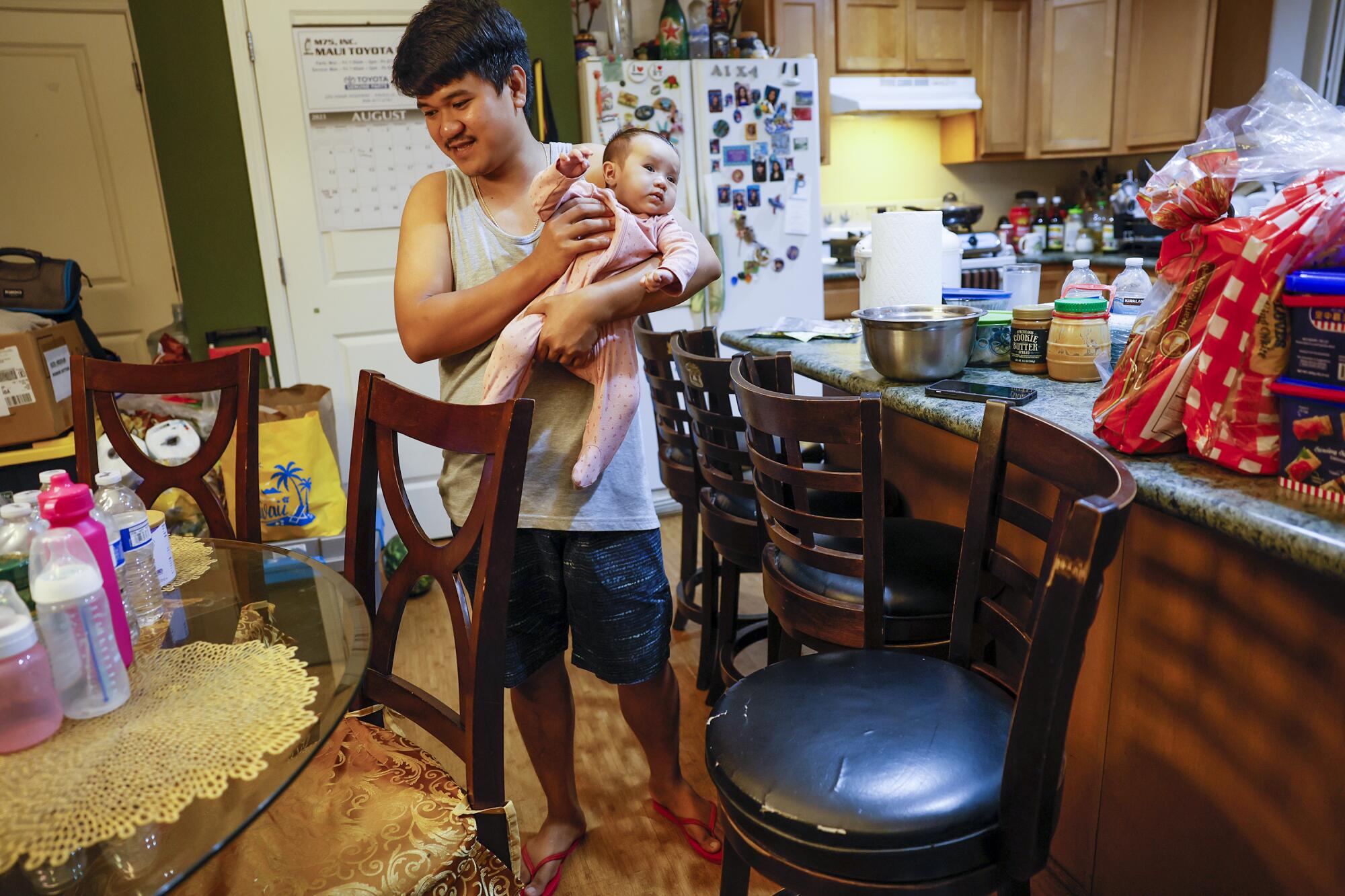
Keona responded with a little sound somewhere between a whimper and a roar, prompting her mother, Rochelle Valiente, to glance over from a stool at the kitchen counter.
She spoke gently to her daughter, asking whether she was trying to build a house. But Keona didn’t answer.
The girl was suddenly vibrating with delight: Marshmallow, a Shih Tzu mix belonging to her aunt and uncle, had jumped on her leg.
Feelings can shift quickly when you are 4 years old. Especially when everything you own now fits in a single, Disney-character covered backpack.
—
Relyn and Jowel Delfin’s Waikapu house sits in a newer subdivision where ranch-style homes and coconut palms line wide blacktop cul-de-sacs — a tropical-tinged archetype of the American dream.
Disasters like the Lahaina fire are becoming increasingly likely as warmer temperatures, development, and land management policies create conditions ripe for fire.
Four of Relyn’s brothers, three of the brothers’ wives and six of their children — 13 people — had moved in with the Delfins since the Aug. 8 fire, when all four brothers lost their Lahaina homes.
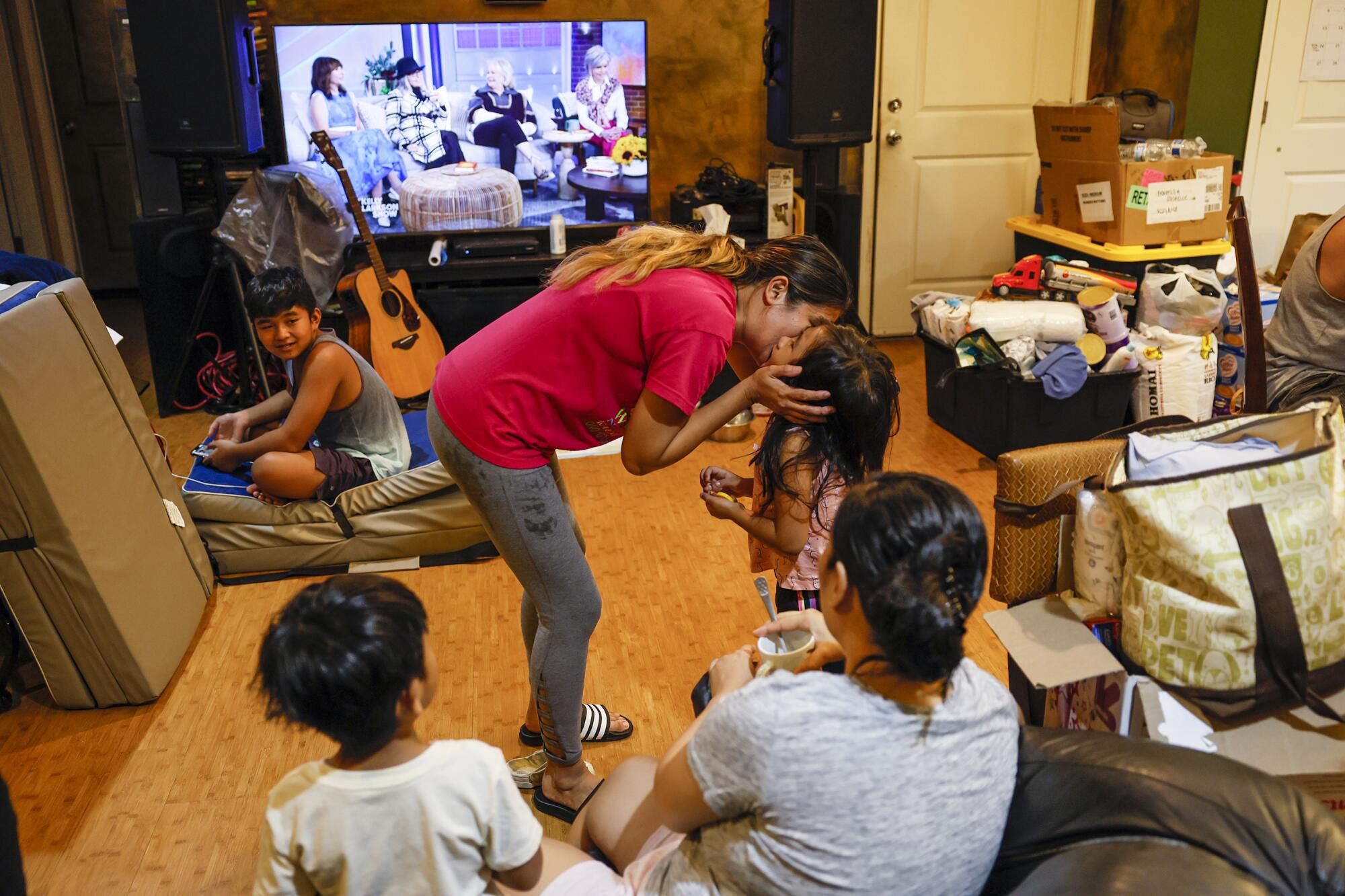
A fifth brother and his wife also lost his home, but they’ve been staying at the Marriott where he works.
Relyn was the first of the Valiente siblings to come to Hawaii, migrating to Maui from the Philippines in 1997. Her husband Jowel joined her 10 years later.
Her siblings slowly followed her across the Pacific, building lives and families in Lahaina, where Filipinos make up about 40% of the population.
Relyn and Jowel moved out of Lahaina in 2012, but still commuted half an hour or so to jobs there and in neighboring Kaanapali.
They and their extended family bus the tables, prep the food, sell the souvenirs and tend the landscapes that made West Maui’s resorts feel like a manicured paradise, at least for the tourists who could afford the nightly rates.
Nearly all of the adults worked two jobs, juggling shifts to save for a better life and send money home to relatives in the Philippines.
—
Back in the living room, Relyn’s sister-in-law Beverly Valiente opened a can of evaporated milk and grabbed a jar of spices to take out to the backyard, where she was cooking a vat of chicken macaroni soup on a gas stove.
Her husband Knorlee was still out in Kaanapali, working an evening shift doing maintenance at the Outrigger hotel.
Jowel and Relyn’s 14-year-old daughter Aixa was in her room watching zombie movies on the queen-sized bed she now shared with her teenage cousins Crystal and Jennah. The girls sleep parallel to the head of the bed, so they can all fit.
Keona and her 4-year-old cousin Noah played like puppies on the still-folded sleeping mats in the corner of the living room, wrestling and kicking and hugging. Later that night, those same mats would be spread across the floor for five people to sleep. Two other people sleep on living room couches.
“They found the brother of Knorlee’s landlady,” Relyn announced flatly from the dining table.
There was some murmuring about the landlady, who had been hospitalized with burns, and her missing brother.
“He’s alive?” Jomar Valiente, Keona’s father, asked hopefully from his kitchen stool.
“No. His body,” Relyn said. “In the car. He’s dead.”
Everyone returned to clicking around on their phones. The network drama playing unwatched on the living room TV suddenly sounded very loud.
Based on a Times review of Maui records, government officials should have been aware of the fire danger Lahaina faced.
Someone switched the channel back to local news, where aerial footage of the disaster played on loop, interspersed with segments about where to find resources and donated goods. Everyone agreed it was strange, watching their lives on the screen.
Then the counter was being cleared and Beverly carried dinner dishes in from the backyard.
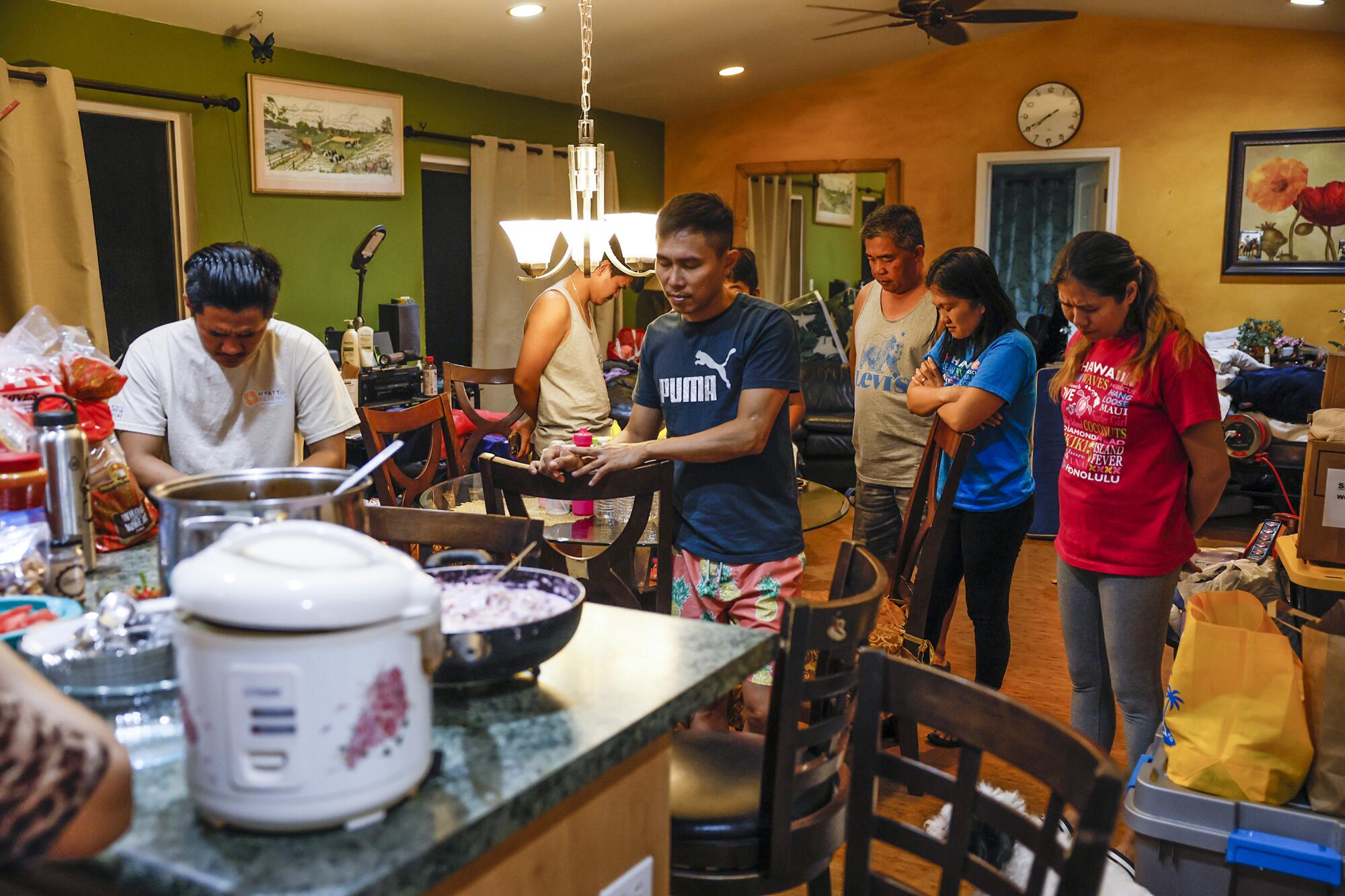
Aris Valiente, Relyn’s brother, scooped formula into a bottle for his 11-week-old daughter Allison, mixing it up as other family members got bowls of soup from the counter. Aris’ wife, Ime, rocked the tiny, freshly bathed baby in her arms.
Jowel took a reddish bottle of vinegar steeped with red chile peppers from his garden, pouring a bit on his pearly soup before offering it to the others.
Argel Valiente, Relyn’s younger brother, sat on the couch with his nephew Noah curled around him while the boy watched YouTube cartoons on a borrowed phone.
Eventually, as always, the conversation returned to Lahaina, where the death count had surpassed 110 with remains still being extracted from the charred rubble.
As Hawaii begins to tally the damage and assess how to improve its safety procedures to address extreme fire weather, California can offer many lessons.
“For me, the missing are in the ocean or cremated,” Jowel said, as others wondered aloud whether more of the lost would ever be found.
He took a piece of his wife’s banana peel and ground it into a paste between two fingers to demonstrate: “All the bodies. Look like sand.”
Beverly looked down at her phone. Ime drank her soup. Keona’s mother, Rochelle, whispered to her sisters-in-law in Filipino.
Rochelle’s husband, Jomar, looked ahead, not quite at his brother-in-law, just staring into space, toward where a promotional calendar from Maui Toyota hung on the wall.
Relyn had printed the words “fire Lahaina” in neat black ink on the square for Tuesday, Aug. 8 — the dividing line that had cleaved all their lives wide open.
Rochelle and Jomar discussed their plans to go stay at the Royal Lahaina Resort in a day or two. Jomar had worked there as a restaurant server, along with his other job as a buser at the Ritz-Carlton in Kapalua, and the hotel was one of several in the area sheltering survivors. It was unclear whether Jennah, their 14-year-old daughter, would go with them back to West Maui or stay here with her aunt and uncle.
Jennah had already started ninth grade with her cousin on this side of the island, and her parents weren’t sure whether the WiFi signal at the hotel would be strong enough for her to do home school there. They also weren’t sure how long they’d be able to stay at the hotel.
So much remained to be seen.
—
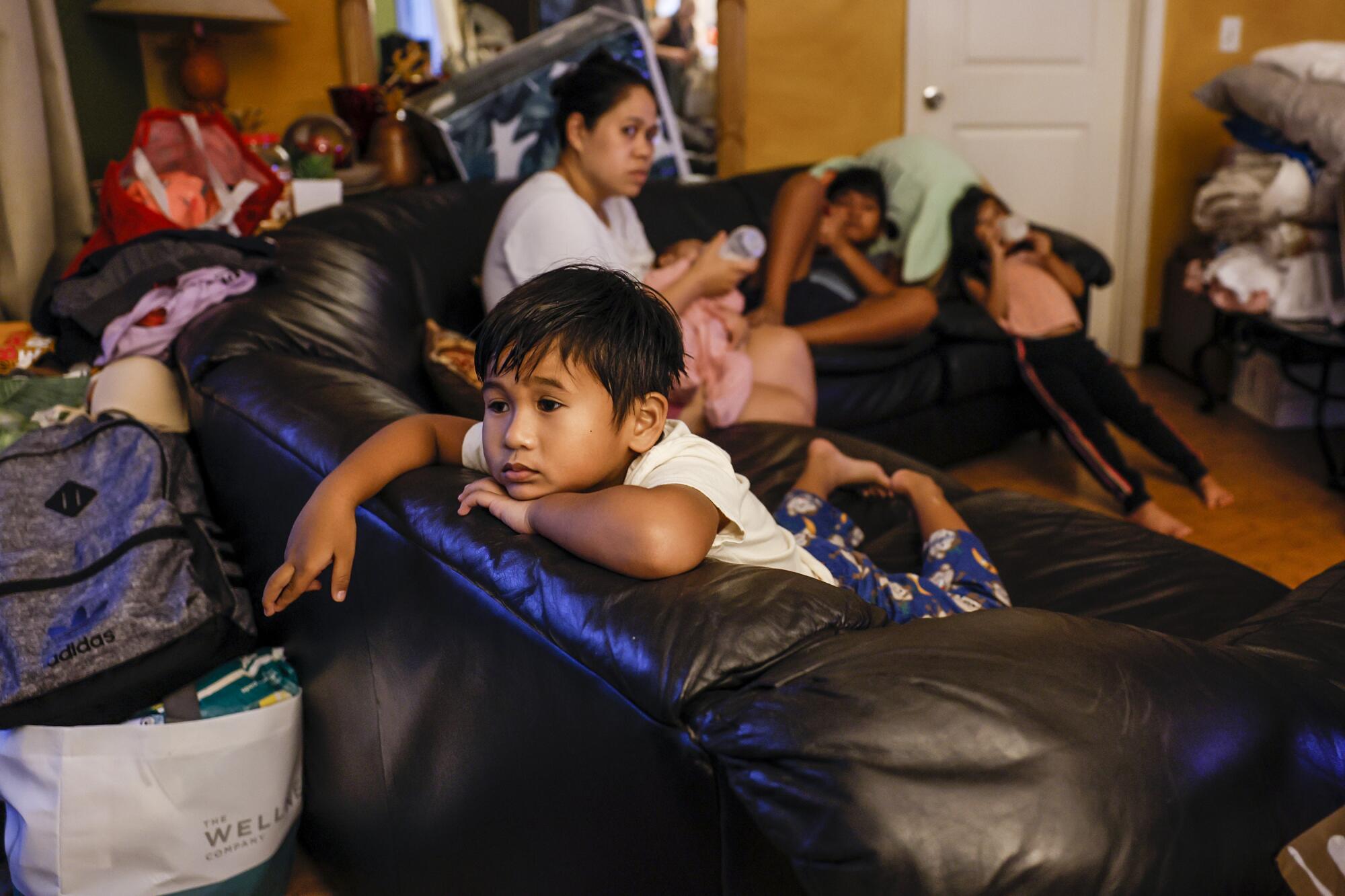
Rochelle and Ime and Beverly were sprawled on the cracked leather couch by the time the 10 o’clock news came on TV.
There was talk of who had already lost their jobs and who had been paid only through the end of the week of the fire, as a news segment about looting in the burn zone played on the screen in front of them.
Rochelle begged a half-awake Keona to let her brush the girl’s hair. Ime and Rochelle talked about the need to file for unemployment benefits.
Ime said it was their only option for now. She had given birth to Allison in June and was still on maternity leave from her job as a bakery clerk at a now-shuttered Lahaina market.
She wasn’t sure where she would be staying or working, or what they’d do for Noah’s fifth birthday on Sept. 28. They had been planning to have it at a hotel.
“I don’t know how we’ll celebrate it now,” she said. “We’re going to be living in a hotel.”
The birthday had to be special, she said, because it would be Noah’s first on Maui with his parents. The sprightly boy had only just moved here in March.
He’d spent the first years of his life living with Ime’s parents in the Philippines, so Ime and Aris could work all the time to get a foothold on the island. Their little family had been finally getting settled, starting to feel more secure.
But that whole life was gone in the fire, toppled like a sandcastle. Now the infant shared a bottom bunk with both parents in the guestroom and Noah slept on the top bunk, and who knew what the future held.
Ime wished she had grabbed more things from the house, more than two pieces of clothing for herself and three shirts and shorts for Noah and five outfits for the baby. But no one had expected the fire to make it all the way to Front Street.
Here is what we know about the origin of the Maui fire and how it so rapidly became an unstoppable force that tore through Lahaina.
There was just so much to figure out, an unbearable amount. Someone had started a GoFundMe for the extended family, but so far it had raised only $650.
“We’re going to start from nothing again,” Ime said very softly. “And we don’t know how to get our feet back.”
It was as if they hadn’t already been working every minute of every day to build a life here, a life with more opportunity, where Noah and Allison would never have to work seven days a week.
Still, she and her husband and brothers- and sisters-in-law believed that God had a plan for them, even now, she said.
They were alive. And they had one another.
More to Read
Sign up for Essential California
The most important California stories and recommendations in your inbox every morning.
You may occasionally receive promotional content from the Los Angeles Times.
